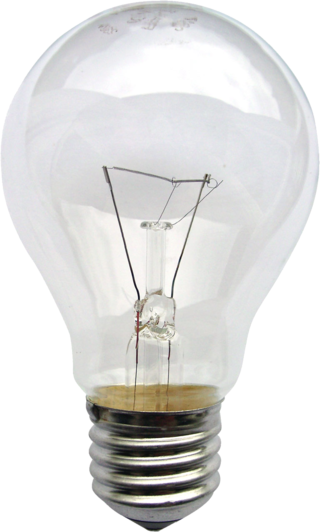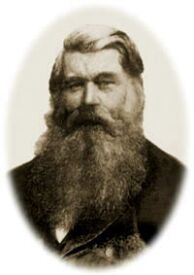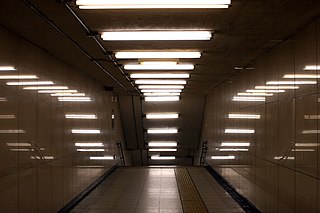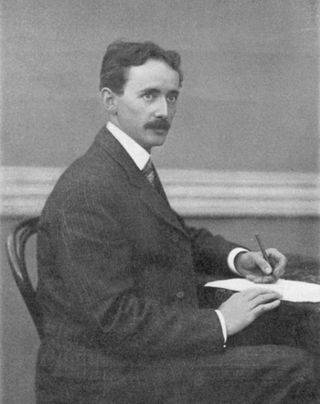
The Kentucky Electrical Lamp Company, based in Owensboro, Kentucky was a pioneering company in the development and manufacturing of incandescent light bulbs.

The Kentucky Electrical Lamp Company, based in Owensboro, Kentucky was a pioneering company in the development and manufacturing of incandescent light bulbs.
Founded in 1899, the Kentucky Electrical Lamp Company began operations at 817 Lewis Street (later renamed J. R. Miller Blvd., in the 1980s) in Owensboro, Kentucky. [1] The company was sold to Roy Burlew in 1918 who used it to create the Kentucky Radio Corporation, later known as Ken-Rad, which operated out of the same building. Burlew grew the company significantly as the lamp plant continued to grow, Burlew expanded into the manufacturing of vacuum tubes for radios in 1922. Within seven years of purchasing the company it had expanded with plants in Bowling Green, Kentucky and Tell City and Huntingburg, Indiana. [2] The manufacturing company supplied the light bulbs for the first Major League Baseball game played at night. The game was played on May 24, 1935, between the Cincinnati Reds and the Philadelphia Phillies at Cincinnati's Crosley Field. [3] In 1943, Burlew sold the lamp division which he acquired in 1918 for $55,000 to the Westinghouse Electric Corporation in exchange of 35,000 shares of that company's stock valued at $1,600,000.
Ken-Rad secured several government and defense contracts during World War II. The company grew to be very important to the war effort, and when it was threatened by a strike in 1944 it was seized by the Department of War under order of President Roosevelt. [2] In 1945 Burlew sold the remainder of the company, the tube division, to General Electric; this became GE's primary tube making facility. [4] In 1987, GE sold the company to a group of investors who formed a company called MPD, Inc. [5]
From 1921 to 2006 the building served as home to Smith Machine and Supply, Inc. The building was torn down in 2007 and the property was repurposed as an Owensboro city park.

An incandescent light bulb, incandescent lamp or incandescent light globe is an electric light with a wire filament heated until it glows. The filament is enclosed in a glass bulb with a vacuum or inert gas to protect the filament from oxidation. Current is supplied to the filament by terminals or wires embedded in the glass. A bulb socket provides mechanical support and electrical connections.

Owensboro is a home rule-class city in and the county seat of Daviess County, Kentucky, United States. It is the fourth-largest city in the state by population. Owensboro is located on U.S. Route 60 and Interstate 165 about 107 miles (172 km) southwest of Louisville, and is the principal city of the Owensboro metropolitan area. The 2020 census had its population at 60,183. The metropolitan population was estimated at 116,506. The metropolitan area is the sixth largest in the state as of 2018, and the seventh largest population center in the state when including micropolitan areas.

Sir Joseph Wilson Swan FRS was an English physicist, chemist, and inventor. He is known as an independent early developer of a successful incandescent light bulb, and is the person responsible for developing and supplying the first incandescent lights used to illuminate homes and public buildings, including the Savoy Theatre, London, in 1881.

A fluorescent lamp, or fluorescent tube, is a low-pressure mercury-vapor gas-discharge lamp that uses fluorescence to produce visible light. An electric current in the gas excites mercury vapor, which produces short-wave ultraviolet light that then causes a phosphor coating on the inside of the lamp to glow. A fluorescent lamp converts electrical energy into useful light much more efficiently than an incandescent lamp. The typical luminous efficacy of fluorescent lighting systems is 50–100 lumens per watt, several times the efficacy of incandescent bulbs with comparable light output. For comparison, the luminous efficacy of an incandescent bulb may only be 16 lumens per watt.

The Audion was an electronic detecting or amplifying vacuum tube invented by American electrical engineer Lee de Forest in 1906. It was the first triode, consisting of an evacuated glass tube containing three electrodes: a heated filament, a grid, and a plate. It is important in the history of technology because it was the first widely used electronic device which could amplify. A low power signal at the grid could control much more power in the plate circuit.

Daniel McFarlan Moore was a U.S. electrical engineer and inventor. He developed a novel light source, the "Moore lamp", and a business that produced them in the early 1900s. The Moore lamp was the first commercially viable light-source based on gas discharges instead of incandescence; it was the predecessor to contemporary neon lighting and fluorescent lighting. In his later career Moore developed a miniature neon lamp that was extensively used in electronic displays, as well as vacuum tubes that were used in early television systems.

Sylvania Electric Products Inc. was an American manufacturer of diverse electrical equipment, including at various times radio transceivers, vacuum tubes, semiconductors, and mainframe computers such as MOBIDIC. They were one of the companies involved in the development of the COBOL programming language.

Tungsram was a manufacturing company located in Hungary and known for their light bulbs and electronics. Established in Újpest in 1896, it initially produced telephones, wires and switchboards. The name "Tungsram" is a portmanteau of tungsten and wolfram, the two common names of the metal used for making light bulb filaments. Before becoming nationalized by the Communist government in 1945, the company was the world's third largest manufacturer of light bulbs and radiotubes, after the American General Electric and RCA companies.

Mazda was a trademarked name registered by General Electric (GE) in 1909 for incandescent light bulbs. The name was used from 1909 to 1945 in the United States by GE and Westinghouse. Mazda brand light bulbs were made for decades after 1945 outside the US. The company chose the name due to its association with Ahura Mazda, the transcendental and universal God of Zoroastrianism whose name means light of wisdom in the Avestan language.

Thomas Clay McCreery was a Democratic U.S. Senator from Kentucky.
General Electric has a long history, involving numerous mergers, acquisitions, and divestitures.
Fluorescent lamp recycling is the recovery of the materials of a spent fluorescent lamp for the manufacture of new products.

Tung-Sol was an American manufacturer of electronics, mainly lamps and vacuum tubes.
WEKV is a K-Love owned-and-operated radio station that is licensed to Central City, Kentucky, United States. The station serves the Central City, Owensboro, Kentucky, and Evansville, Indiana areas. The station is currently owned by Educational Media Foundation, the owner of the K-Love radio network.

The Confederate Monument in Owensboro, Ky., was a 16-foot-tall, two-part object — a 7-foot-tall bronze sculpture atop a 9-foot-tall granite pedestal — located at the southwest corner of the Daviess County Courthouse lawn, at the intersection of Third and Frederica Streets, in Owensboro, Kentucky. Nearly 122 years after the monument was dedicated in September 1900, the monument was dismantled in 2022, beginning with the removal of the sculpture in May 2022; the sculpture was placed in storage, pending a decision on what to do with it.
Yelvington is a small unincorporated community in the U.S. state of Kentucky, located approximately 12 miles east of Owensboro along U.S. Route 60 east and near the Daviess-Hancock county line.

GE Canada is the wholly-owned Canadian unit of General Electric, manufacturing various consumer and industrial electrical products all over Canada.
Yelvington Baptist Church organized on June 30, 1813, about two miles west of its present location in Yelvington, Kentucky, is the oldest Southern Baptist congregation in Daviess County, Kentucky. When organized the church adopted its original name as "Panther Creek Church of Ohio County, near Yellowbanks." This name was adopted because of what is now known as Yelvington was in Ohio County at that time. In 1817 the name was changed to "Rock Spring", and in 1854 the name was changed to "Yelvington Baptist Church" and as remained so ever since. It is the oldest Baptist church in Daviess County.
Sorgho, Kentucky, originally named and known as Sorghotown, the boundaries of this unincorporated community were described in an order dated 12 May 1874, by Daviess County, Kentucky Judge Triplett, worded as follows: " Upon the application of ten voters to be effected by the change hereinafter specified; and it appearing to the Court right and proper that said change should be made; and further that the requirements of the law as to notice before application has been complied with, – it is therefore ordered that an additional voting precinct be and the same is hereby established in Daviess County (Kentucky), in District No. 1, to be called and known as 'Sorghotown Voting Place'...." The community was named for the Daviess County Sorgho Sugar Company which was formed there in 1868–'69 by Dr. J. Q. A. Stewart, J. Balee and E. Guthrie. that organized there in the winter of 1868–69 for the manufacturing of sorghum sugar. Once the factory was established the community began to develop.

The Edison and Swan Electric Light Company Limited was a manufacturer of incandescent lamp bulbs and other electrical goods. It was formed in 1883 with the name Edison & Swan United Electric Light Company with the merger of the Swan United Electric Company and the Edison Electric Light Company.